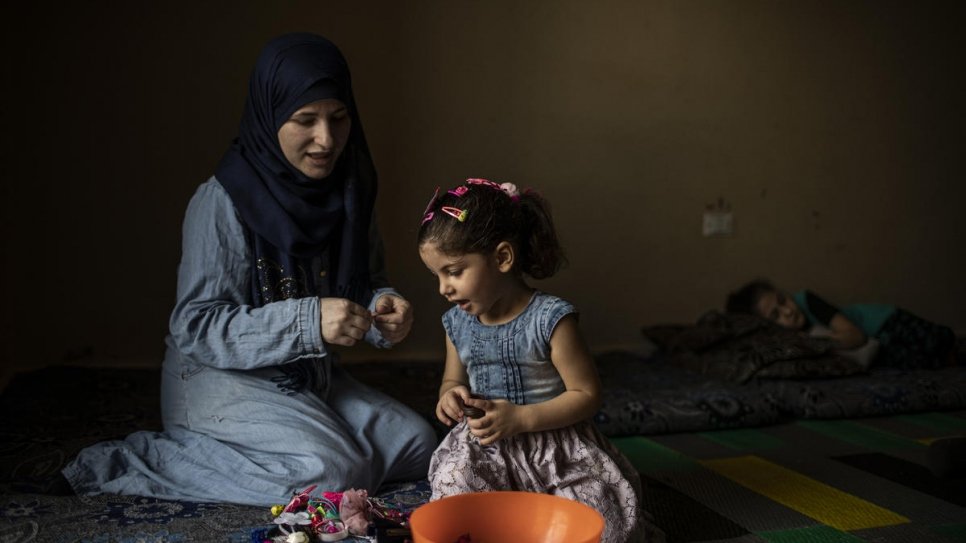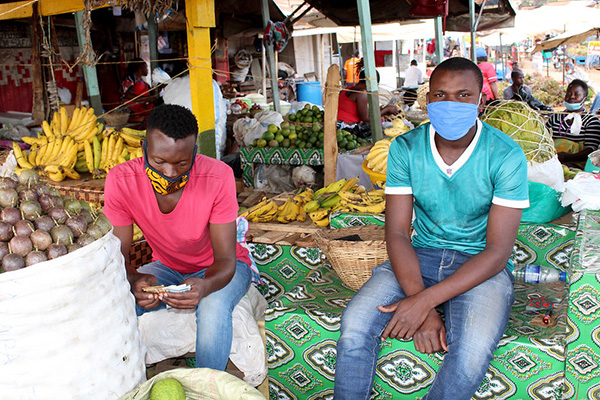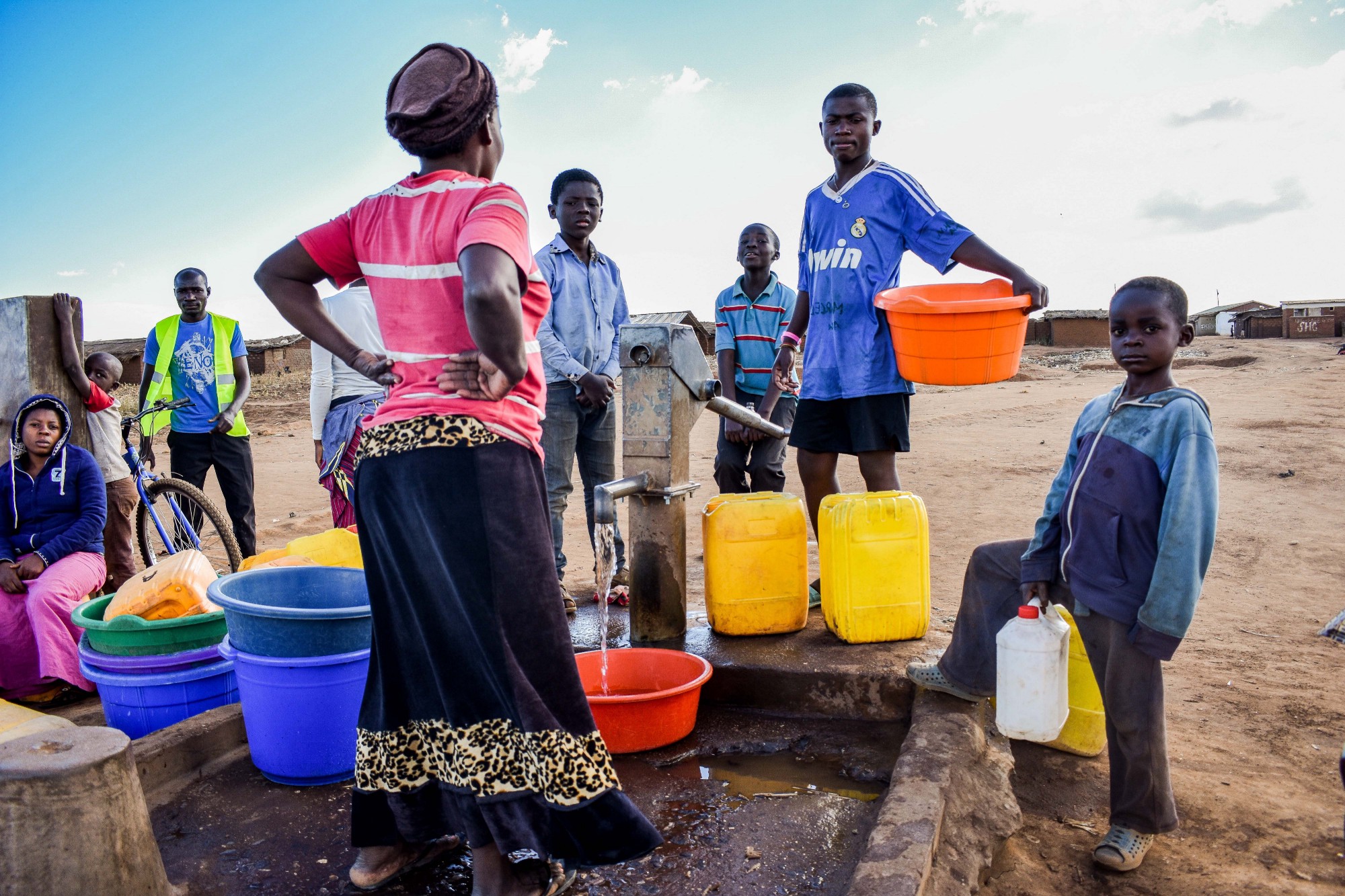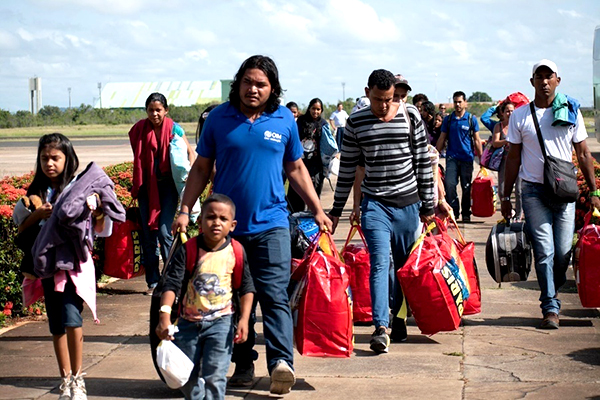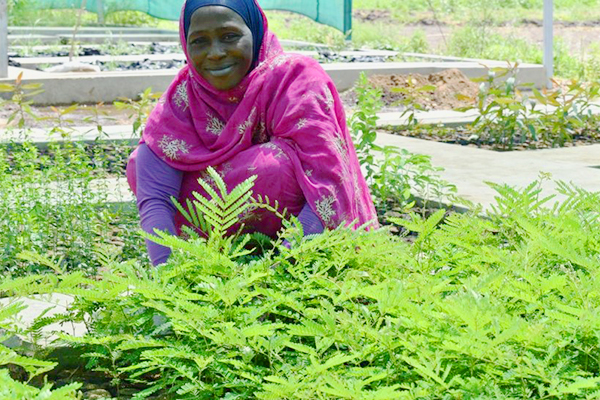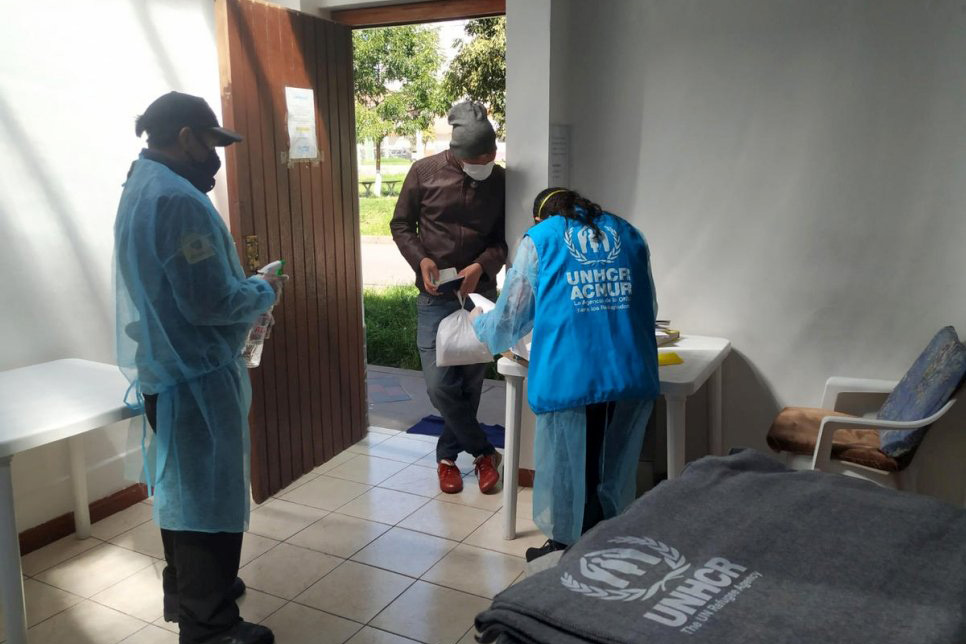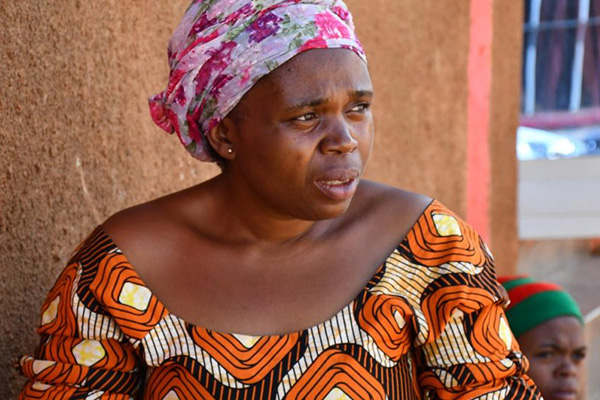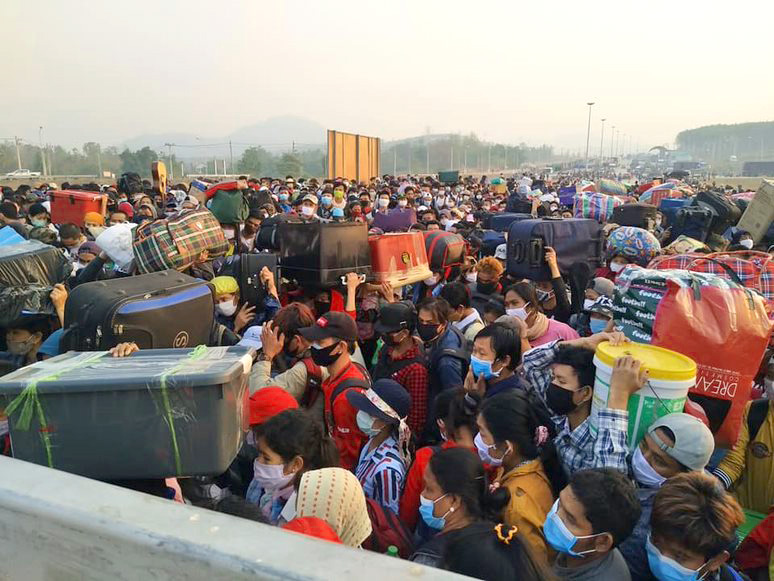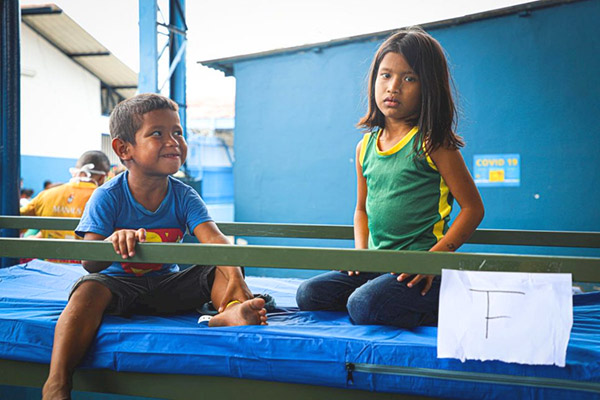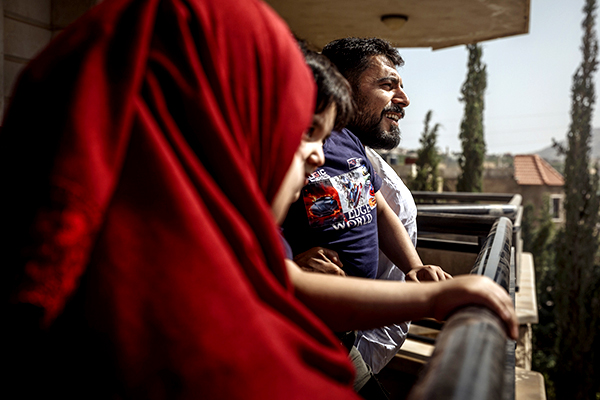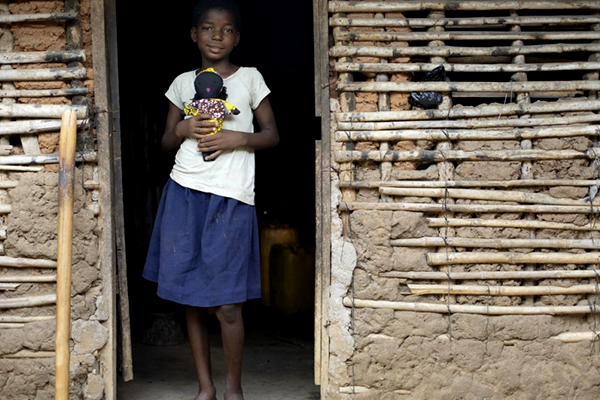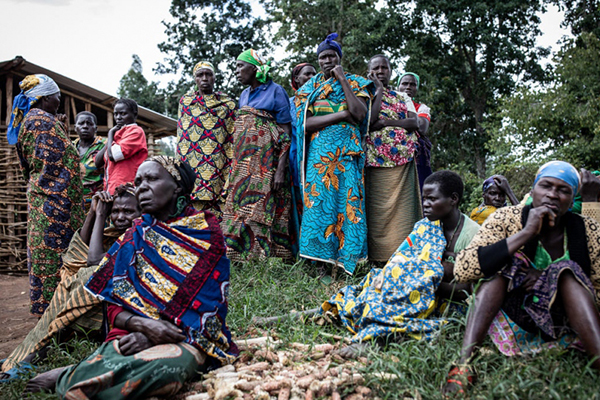After surviving fourteen months living in fear and hunger during the siege of Eastern Ghouta near Damascus, Wafaa Hashim and her family were grateful just to escape with their lives when they fled the siege and made their way to Lebanon as refugees in 2014. After five years, struggling to survive there, they were scheduled for relocation to Norway, but the lockdown measures introduced in mid-March to prevent the spread of COVID-19 meant the family’s flights were cancelled and their resettlement put on hold.
Displaced Persons and Refugees
Tens of millions of migrant workers, forced to return home after losing their jobs due to the COVID-19 lockdown, face unemployment and poverty in their home countries, warned the ILO. Millions of migrant workers may be required to return home where labour markets, are now further weakened by the additional strain of high levels of unemployment and serious business disruptions. In addition, their families will suffer from the loss of the remittances normally sent to them.
‘Safe in Malawi, now we must escape the coronavirus’
Migration has been the focus of intense political debate in recent years. While most people have positive perceptions about immigrants, there are still misconceptions and concerns. For instance, some think that migrants are a burden on economies. In the IMF’s new study, Chapter 4 of the April 2020 World Economic Outlook looks at the economic impact of migration on recipient countries and finds that migration generally improves economic growth and productivity in host countries.
Graphic designer O’Plérou made world headlines with 365 emojis that change the way people see Africa. Now he has turned his creative spotlight onto refugees.
A thick water pipe snakes its way from Sudan’s White Nile River for over two kilometres, pumping into a large reservoir in Al Jabalain locality, where thousands of saplings are growing. The tree nursery has a capacity to produce 200,000 saplings a year – the fruit of a partnership between the Sudan’s forestry body, the Forests National Corporation (FNC), and UNHCR, the UN Refugee Agency. Refugees and their hosts together plant one million trees in a massive reforestation drive in Sudan’s White Nile State.
As Latin America emerges as the new epicentre of the COVID-19 pandemic, UNHCR, the UN Refugee Agency, warns of worsening conditions for displaced Venezuelans in the southern region of the continent as winter approaches. In addition to health risks, COVID-related lockdowns and confinement measures have already resulted in severe hardship for Venezuelan refugee and migrants. Many have now lost their livelihoods and are faced with poverty, destitution, eviction, widespread hunger and food insecurity as well as increased protection risks. With the approaching cold weather, UNHCR is bracing for a deepening of the crisis.
Uganda hosts 1.4 million refugees – more than 80,000 of them live and work in Kampala. Refugees who opt to live outside designated settlements are expected to be self-reliant and do not receive regular humanitarian assistance, in line with the government’s urban refugee policy. UNHCR tells the story of Mariney Karemere, a Congolese refugee who made and sold her handbags before the lockdown. The single mother of three now survives on food handouts from a community church.
Refugees at the Innovation Lab in Za’atari refugee camp have designed a robot prototype made from LEGO which automatically dispenses sanitiser so people don’t have to touch the bottle. Their aim is to help prevent coronavirus and contribute towards the global effort to control the disease.
As instances of hate speech, stigma, discrimination and xenophobia continue to rise as a result of COVID-19, the United Nations works to ensure that solidarity prevails during the pandemic. According to the IOM, stigmatization during crisis situations is not new. Migrants have often been scapegoated for endangering native populations. Therefore, efforts by the IOM include follow-up calls to migrant communities returning home to check on their wellbeing. Additionally, the UN has issued guidance to address COVID-19 related hate speech to also fight the virus of hate.
As the Coronavirus pandemic spreads through Latin America, the UN Refugee Agency is warning that many displaced indigenous communities are now dangerously exposed and at risk. National lockdowns have also ground to a halt many of their livelihood activities, such as farming, the selling of produce and handicraft production. UNHCR works with national governments to ensure COVID-19 prevention measures and assistance reaches remote areas where these groups have found safety.
Resettlement Offers a Vital Lifeline to Syrian Refugees
The United Nations works around the clock to prevent the pandemic from wreaking havoc on refugees, migrants and other vulnerable populations already facing humanitarian crises. In cramped camp settings, measures to avoid community transmission such as physical distancing and frequent handwashing, are difficult to implement. To prepare for a potential outbreak of the coronavirus in the camps, UNHCR and partners have started constructing isolation and treatment facilities. Refugees and internally displaced people themselves are also responding to the looming threat of COVID-19.
UNRWA launches a rapid response distance learning plan, the “Education Cannot Wait” initiative for 118,000 Palestine refugee students in 169 schools due to COVID-19 closures.
The number of people fleeing conflict or violence but remaining within their own countries has reached an all-time high. 8.5 million new displacements resulting from conflict or violence were recorded in 2019. Another 25 million were triggered by disasters such as cyclones and hurricanes. UNHCR speaks with the Director of the Internal Displacement Monitoring Centre about internal displacement and her chief concerns in 2020, especially in the context of the coronavirus pandemic.

